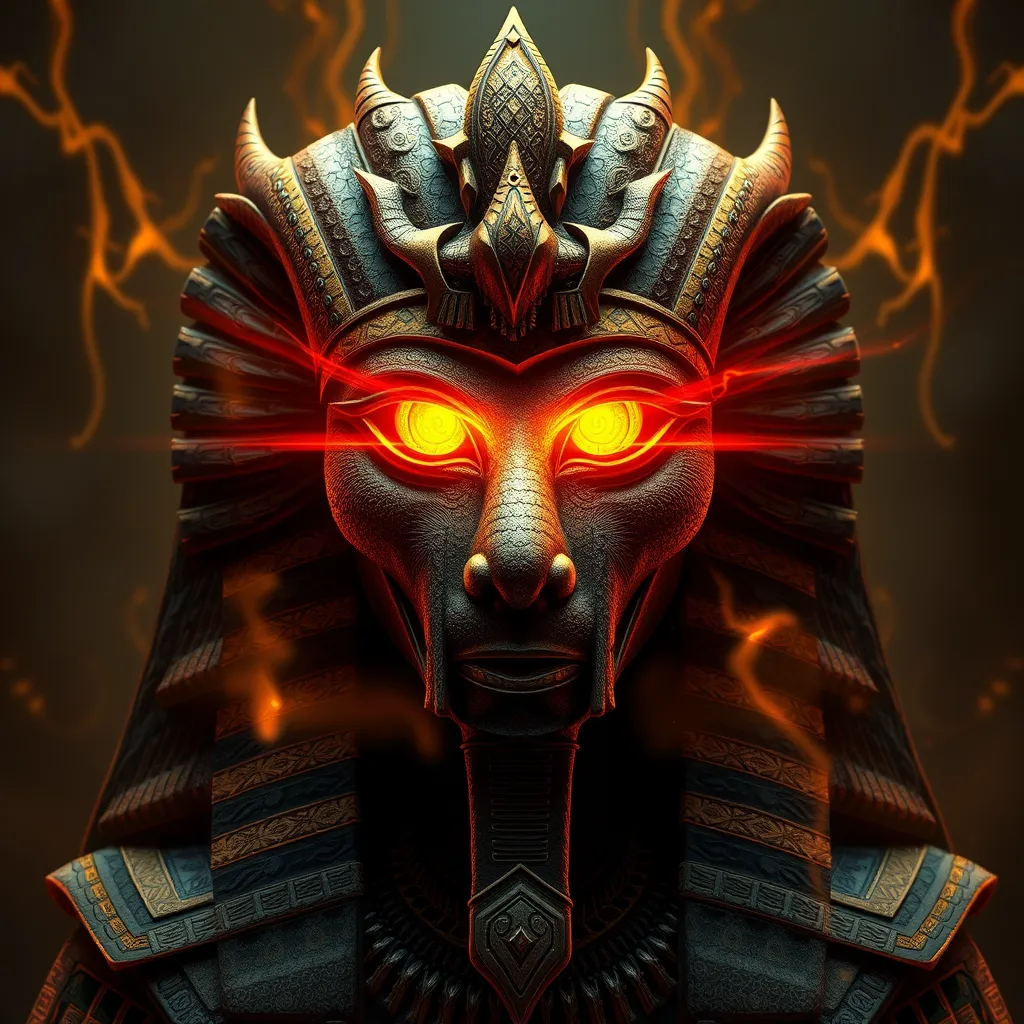The Eye of Ra: The Power and Wrath of the Goddess Sekhmet
I. Introduction
Egyptian mythology is a rich tapestry of gods, goddesses, and cosmic forces that shaped the world of the ancient Egyptians. Among the vast pantheon, the Eye of Ra stands out as a powerful symbol of divine authority and retribution. This article delves into the significance of the Eye of Ra and introduces Sekhmet, the fierce goddess associated with its power.
II. The Mythological Origins of Sekhmet
Sekhmet, known as the “Powerful One,” is one of the most formidable deities in ancient Egyptian mythology. Her origins are deeply intertwined with the sun god Ra. According to myth, she was born from Ra’s fiery eye, symbolizing his protective and vengeful nature.
The relationship between Ra and Sekhmet is crucial in understanding the concept of the Eye of Ra. When the world faced chaos and disorder, Ra sent Sekhmet to punish humanity for their disobedience. This act of retribution illustrates her role as the fierce protector of Ma’at, the principle of truth and cosmic order.
In imagery, Sekhmet is often depicted as a lioness or a woman with a lioness head, symbolizing strength, ferocity, and war. The lion, a creature of immense power, embodies her identity as a goddess of battle and destruction.
III. The Dual Nature of Sekhmet
Sekhmet embodies a duality that is central to her narrative. On one hand, she is the goddess of war, known for her protective nature over the pharaohs and her fierce combat against the enemies of Egypt. On the other hand, she possesses a healing aspect, often associated with the art of medicine and the alleviation of suffering.
- Goddess of War: Sekhmet was revered as a protector who fought against chaos and injustice.
- Healing Aspect: She was also seen as a healer, capable of curing the sick and protecting against diseases.
This balance between destruction and healing highlights the complexities of her character. Sekhmet’s stories often reflect the necessity of both aspects in maintaining order in the universe.
IV. The Eye of Ra: Symbolism and Power
The Eye of Ra is a potent symbol representing divine power, protection, and vengeance. It is often depicted as a sun disk surrounded by a serpent or as an eye with intricate markings. This symbol signifies not only the watchful eye of the gods but also the capacity for wrath against those who disrupt cosmic order.
The connection between the Eye of Ra and Sekhmet’s wrath is profound. When the Eye was sent forth to punish humanity, it took the form of Sekhmet. Her ferocity was a manifestation of Ra’s anger and desire to restore balance. This illustrates how closely linked the goddess is to the concept of divine retribution.
In ancient Egyptian society, the Eye of Ra held significant cultural importance, representing the sun, royalty, and protection. It served as a reminder of the gods’ omnipresence and their ability to intervene in human affairs.
V. Sekhmet in Ancient Egyptian Worship
Sekhmet was widely worshipped throughout ancient Egypt, with numerous temples dedicated to her. One of the most notable was the Temple of Sekhmet at Karnak, where rituals and offerings were made to honor her fierce nature.
- Temples and Rituals: Large festivals were held in her honor, where priests would perform rituals to appease her and seek her blessings.
- Festivals and Offerings: The Feast of Drunkenness celebrated Sekhmet’s dual nature, where wine was offered to her to calm her wrath.
Sekhmet also played a role in funerary practices. She was believed to protect the deceased and ensure a safe passage into the afterlife, showcasing her nurturing side alongside her destructive capabilities.
VI. Sekhmet’s Influence on Modern Culture
In contemporary culture, Sekhmet has transcended her ancient origins, appearing in various forms of art, literature, and media. Her fierce nature and duality resonate with modern audiences seeking to understand power and femininity.
- Representation in Art and Literature: Sekhmet is often depicted in modern art as a symbol of strength and empowerment, inspiring countless works that explore themes of female rage and resilience.
- Influence on Contemporary Spiritual Practices: Many modern spiritual practices have incorporated Sekhmet as a figure of healing and protection, drawing on her dual nature.
Additionally, there has been a resurgence of interest in ancient Egyptian deities, with Sekhmet serving as a focal point for those exploring ancient wisdom and mythology.
VII. Lessons from the Myth of Sekhmet
The myth of Sekhmet offers valuable lessons about the nature of power, violence, and balance. Her duality teaches us that strength can coexist with compassion and that destruction is often necessary for healing and renewal.
- Importance of Balance: The narrative emphasizes the need to find equilibrium between different forces, whether in personal life or in broader societal contexts.
- Understanding Divine Wrath: Sekhmet’s wrath serves as a reminder of the consequences of human actions and the importance of adhering to moral and ethical standards.
Modern interpretations of Sekhmet’s character encourage individuals to embrace their complexities and acknowledge the multifaceted nature of existence.
VIII. Conclusion
Sekhmet’s significance in Egyptian mythology is profound, representing the duality of destruction and healing, power and compassion. The Eye of Ra, as a symbol of divine authority, is inextricably linked to her narrative, highlighting the complexities of cosmic balance.
Reflecting on the enduring legacy of Sekhmet and the Eye of Ra invites us to consider the relevance of ancient myths in today’s world. These stories, rich with meaning, continue to offer insights into the human experience, reminding us of the power within ourselves and the importance of harmony in all aspects of life.




